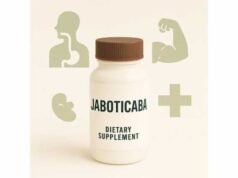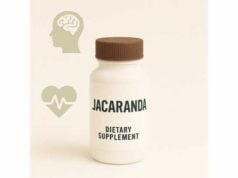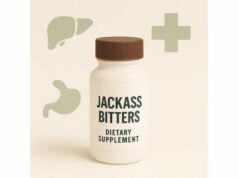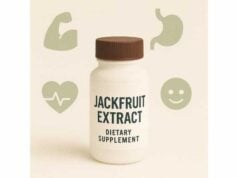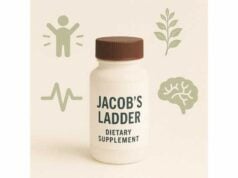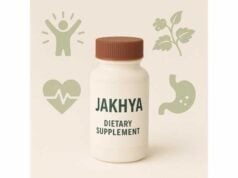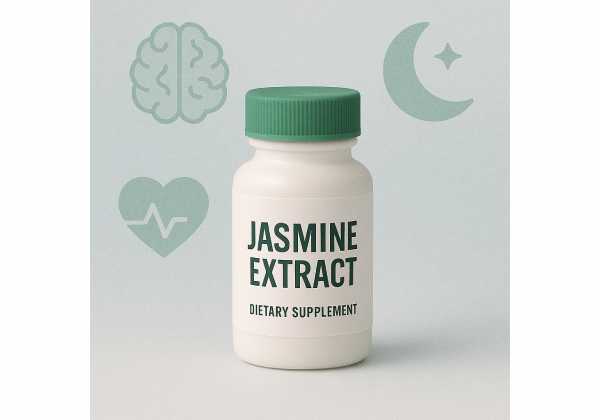
Jasmine extract has a long history in traditional beauty and wellness. Derived mainly from Jasminum sambac and Jasminum grandiflorum, it appears in aromatherapy blends, skin serums, and soothing balms—and, importantly, it’s more than a fragrance. Modern analyses show concentrated aromatic molecules (like benzyl acetate, linalool, and jasmone) and polyphenols that can influence mood, support skin barrier comfort, and offer antimicrobial activity. Early clinical trials even suggest that inhaled jasmine may ease state anxiety for some users, while topical preparations can calm temporary redness and dryness when properly diluted. That said, “jasmine extract” isn’t one thing: there are solvent-derived absolutes, steam-distilled essential oils, and alcohol or water-based botanical extracts—and each behaves differently on skin and in diffusers. This guide explains the differences, practical ways to use jasmine safely, sensible dosage ranges, and what the research really says so you can choose confidently—whether you’re blending a bedtime diffuser, patch-testing a face oil, or comparing ingredient lists on a moisturizer.
Key Insights
- Inhaled jasmine can acutely lower state anxiety scores and modestly steady heart rate and blood pressure in some trials.
- Topical jasmine flower extracts show antioxidant and soothing activity, supporting skin comfort and even tone.
- Typical dilution is 0.5–1% for the face and 1–2% for the body; use 3–6 drops in 100 mL water for diffusion.
- Essential oils and absolutes may trigger sensitivity; patch test and avoid during the first trimester unless cleared by a clinician.
Table of Contents
- What is jasmine extract?
- What are the benefits and how do they work?
- How to use it day to day
- Dosage: how much and how often?
- Side effects and who should avoid it
- Evidence check: what research shows
What is jasmine extract?
“Jasmine extract” is an umbrella term for several preparations made from jasmine flowers and, less commonly, leaves or roots. The three most common forms you’ll encounter are:
- Jasmine absolute: Produced by solvent extraction (typically hexane, then ethanol) of fresh flowers, yielding a thick, richly aromatic concentrate. It is prized in perfumery because it preserves delicate indole notes that steam distillation can lose. Trace solvent limits are tightly controlled by reputable suppliers, but the product is potent and should be diluted before skin use.
- Jasmine essential oil: Obtained by steam or hydro-distillation (or CO₂ extraction). While more volatile and generally lighter than an absolute, it still contains key odorants (such as benzyl acetate, linalool, cis-jasmone, indole) that drive the characteristic aroma. Because it is “neat” (undiluted), it must be blended into a carrier oil before topical use.
- Botanical (non-volatile) extracts: Hydroalcoholic or glycerin-based extracts from flowers (and sometimes cell cultures) standardized for polyphenols, flavonoids, or other non-volatile compounds. These carry fewer fragrance allergens than absolutes or essential oils and are common in skin care for antioxidant and soothing effects.
Chemistry in brief. Jasmine’s smell and activity trace back to aromatic esters (benzyl acetate, methyl anthranilate), terpenes (linalool, farnesol), lactones (jasminolactone), and trace indoles—plus non-volatile phenolics in hydroalcoholic extracts. The volatiles primarily influence the central nervous system via olfactory pathways (which can shift autonomic tone), whereas polyphenols and triterpenoids contribute antioxidant and anti-inflammatory effects on skin.
Absolute vs. essential oil vs. extract—when to pick which.
- Choose an absolute or essential oil when your goal is aromatherapy or a perfumed body oil; their volatile constituents drive mood and perceived alertness/relaxation.
- Choose a hydroalcoholic or glycerin extract when your goal is skin resilience, redness reduction, or antioxidant support, especially if you have a history of fragrance sensitivity.
Naming matters. Labels may read Jasminum sambac (Arabian jasmine), J. grandiflorum (Spanish/French jasmine), or simply “jasmine.” Sambac skews fruitier and indolic; grandiflorum is greener and tea-like. For supplements, dietary oral jasmine products are uncommon and not well standardized; most evidence relates to inhalation or topical use.
Safety snapshot. As with all aromatic botanicals, keep concentrations low, patch test, and avoid applying undiluted oil to skin. People with fragrance allergies, severe asthma, or very reactive skin should start with non-volatile extracts (or avoid jasmine entirely).
What are the benefits and how do they work?
1) Calming anxious states and steadying stress markers (inhalation).
Human trials pooling different essential oils suggest that short inhalation sessions can reduce state anxiety scores while modestly lowering heart rate and systolic blood pressure. In network comparisons, jasmine (from Jasminum sambac) often ranks among the better-performing oils for acute state anxiety responses. Mechanistically, volatile compounds stimulate olfactory receptors that project to limbic structures (amygdala, hippocampus), shifting autonomic balance—often reflected as lower sympathetic tone and improved subjective calm.
2) Uplifting and alertness.
Unlike heavily sedative aromas, jasmine is frequently described in lab studies as stimulating yet balancing—some participants report clearer focus and improved mood without drowsiness. This profile makes it a candidate for pre-performance nerves, stressful meetings, or evening relaxation that doesn’t induce next-day grogginess.
3) Skin comfort, antioxidant, and tone support (topical extracts).
Hydroalcoholic flower or cell extracts deliver phenolics that defend against oxidative stress (reactive oxygen species) and protein glycation byproducts (AGEs) that can stiffen dermal collagen. In vitro and early cosmetic studies show improvements in antioxidant markers, barrier comfort, and a gentle evening of skin tone (often marketed as “brightening”). These extracts are typically added to serums or emulsions at manufacturer-specified percentages and can be fragrance-reduced compared to absolutes.
4) Soothing of aches and localized discomfort (topical gels).
A pragmatic randomized trial using a 10% J. sambac leaf-extract gel (alone or with ultrasound-assisted phonophoresis) reported better relief of musculoskeletal pain and stiffness compared with diclofenac gel in certain conditions. While more confirmatory trials are needed, it raises interest in jasmine-enriched topical formulas for temporary aches.
5) Microbial balance and product preservation assistance.
Jasmine volatiles exhibit antimicrobial activity in bench studies against common skin microbes, which may complement preservative systems. This doesn’t mean jasmine replaces proper preservation or hygiene; rather, it may add minor supportive effects in complex formulations.
6) Emotional–sensory care.
Because scent memory is powerful, jasmine can be a useful anchor in behavioral routines—e.g., pairing a 5-minute breathing exercise with a diffuser blend before bed or using a consistent pre-meeting inhaler aroma to cue calm. In this way, jasmine serves as a sensory habit tool as much as an active ingredient.
What jasmine is not. It is not a stand-alone treatment for anxiety disorders, depression, or chronic pain. Think of it as a complementary option to layer onto evidence-based care—especially when used in low-risk formats like brief diffusion or well-diluted topical application.
How to use it day to day
Aromatherapy (quick and simple).
- Water diffuser: Add 3–6 drops of jasmine absolute/essential oil per 100 mL of water. Run for 15–30 minutes, then break for at least the same duration (continuous diffusion can lead to olfactory fatigue or headaches).
- Personal inhaler: Load 10–15 drops onto the wick of a refillable inhaler. Use 3 slow breaths through one nostril, then the other, up to 3 times daily as a calming ritual.
- Aromastick on the go: Put 1–2 drops on a tissue or cotton pad; keep several inches from the nose and inhale gently for 10–20 seconds.
Topical body care.
- Body oil: Dilute jasmine absolute/essential oil to 1–2% in a neutral carrier (e.g., fractionated coconut, jojoba). For 30 mL of carrier, that’s 6–12 drops total jasmine. Massage a small amount over shoulders, neck, or forearms.
- Face oil/serum: Aim for 0.5–1% maximum. For sensitive or reactive skin, start lower (0.2–0.3%) or choose a fragrance-reduced botanical extract instead of the essential oil/absolute.
- Spot fragrance (pulse points): For perfume-style use, a 2–5% roller in carrier oil is typical for wrists and behind ears. Avoid mucous membranes and broken skin.
Skin-care formulations (using botanical extracts).
- Choose standardized hydroalcoholic or glycerin extracts or plant cell culture extracts of J. sambac. Typical inclusion levels in finished products range 0.5–3%, depending on supplier specs and desired effect (antioxidant/soothing).
- Combine with niacinamide (2–5%) or centella extracts for barrier support, and vitamin E (0.2–0.5%) to bolster oxidative stability of the oil phase.
- Maintain proper preservation and pH as per your base formula; jasmine components do not eliminate the need for a robust preservative system.
Targeted relief (gels and balms).
- For localized aches, consider a jasmine-enriched gel as part of a supervised plan. If using a pre-made product, follow label directions; if DIY formulating, keep volatile jasmine components low (≤1% total aromas) and lean on non-volatile extracts for comfort.
Good practice essentials.
- Patch test every new product on the inner forearm for 24–48 hours.
- Avoid the eyes, lips, and compromised skin.
- Store cool and dark. Oxidized oils raise the risk of irritation—discard if scent changes sharply or smells “paint-like.”
- Mind the surroundings. Diffuse away from babies, pets (particularly cats and birds), and anyone sensitive to fragrances.
Dosage: how much and how often?
Because jasmine products vary widely, use format-specific ranges rather than a single universal “dose.”
Inhalation (adults).
- Diffuser: 3–6 drops per 100 mL water, up to 2–3 sessions/day, 15–30 minutes per session.
- Personal inhaler: 10–15 drops loaded once; take 3 slow inhalations per session, up to 3 times/day. Replace the wick every 2–4 weeks.
Topical (adults).
- Face products: 0.5–1% jasmine absolute/essential oil in carrier oil or emulsions; begin at the low end if skin is sensitive.
- Body products: 1–2% in carrier oil for general massage; 2–5% only for small pulse-point fragrance rollers (not for large-area application).
- Hydroalcoholic/glycerin extracts: Follow supplier guidance; common finished-product levels are 0.5–3%.
Frequency. For daily wellness routines, once daily topical use (evening) or one to two short inhalation sessions is enough for most adults. Save higher-intensity use (e.g., pre-event inhalation) for specific moments.
Children and older adults. Use lower diffusion times and half the drop count. For topical care, prefer fragrance-reduced botanical extracts over essential oils; keep facial formulas at ≤0.25% jasmine volatile content.
Oral ingestion? Not recommended for essential oils or absolutes. Oral supplements of jasmine flower extract are uncommon and poorly standardized; unless directed by a qualified clinician using a clearly labeled product, stick to inhalation and topical use.
Pregnancy and lactation. Many aromatherapists advise avoiding jasmine in the first trimester; in later pregnancy, use only very low inhaled amounts and ≤0.5% topical dilution with clinician approval. During lactation, avoid application on or near the chest to prevent infant exposure.
Drug interactions. No consistent, clinically significant drug-interaction profile is established for inhaled or properly diluted topical jasmine. Still, anyone using topical retinoids, post-procedure actives, or with dermatologic conditions should introduce jasmine slowly and monitor for irritation.
Side effects and who should avoid it
Common, usually mild reactions.
- Skin irritation or sensitization: Redness, itching, or stinging, especially at higher dilutions or with oxidized oils. Reduce to ≤0.5% on the face, check freshness, and patch test.
- Headache or nausea: Over-diffusion or scent overload can trigger symptoms. Shorten sessions and ensure ventilation.
- Eye and mucosal irritation: Avoid application near eyes, nostrils, or broken skin.
Less common but important.
- Allergic contact dermatitis: Fragrance allergens (e.g., linalool, benzyl alcohol derivatives) can be culprits. If you’ve reacted to perfumes or scented products before, choose non-volatile extracts or avoid jasmine entirely.
- Respiratory sensitivity: People with asthma, chronic cough, or scent sensitivity may find strong aromas irritating; prefer topical, low-fragrance extracts or skip aromatherapy.
Special populations.
- Pregnancy: Avoid in first trimester; later use only with approval and at very low concentrations.
- Infants and young children: Do not apply jasmine essential oil/absolute to infants. Diffusion near babies is discouraged.
- Pets: Cats and birds are especially sensitive to essential oils. Do not diffuse in the same room as pets; never apply to fur or skin.
Myths to set aside. Jasmine is not phototoxic (unlike some citrus oils), and it does not detoxify the body. Benefits are primarily sensory (mood and comfort) and topical (antioxidant/soothing) when used correctly.
When to stop and seek help. Discontinue immediately if you develop hives, wheezing, facial swelling, persistent dizziness, or blistering; seek medical care. If anxiety, pain, or insomnia are severe or persistent, consult a clinician for a treatment plan—aromatics alone are insufficient.
Evidence check: what research shows
Psychological outcomes (inhalation).
A modern systematic review and network meta-analysis comparing multiple essential oils found that short-session aromatherapy can reduce validated anxiety scores, with jasmine often ranking among the top options for state anxiety. Physiologic co-markers (heart rate and systolic blood pressure) showed modest improvements, consistent with a shift toward parasympathetic balance. These trials typically used brief inhalation or diffusion and measured immediate outcomes; long-term mood disorders require comprehensive care beyond aromatherapy.
Topical outcomes (skin).
Laboratory and cosmetic-use studies on J. sambac flower and cell extracts report antioxidant, anti-glycation, and soothing effects relevant to skin aging and uneven tone. These extracts can complement barrier-support routines (e.g., alongside niacinamide or ceramides). While the data are encouraging, most are small, short-term, or manufacturer-supported; independent, placebo-controlled studies in diverse populations would strengthen confidence.
Musculoskeletal comfort (gels).
A 2024 pragmatic randomized clinical study tested a 10% jasmine leaf-extract gel with and without phonophoresis, reporting greater improvements in pain and stiffness than diclofenac gel in certain measures. The design suggests real-world relevance but also introduces variables (community setting, phonophoresis) that warrant replication in blinded, controlled settings. Still, the signal justifies further research and cautious product exploration.
Composition and safety background.
Older but useful analytical work characterizes jasmine volatiles and non-volatile constituents, supporting plausible mechanisms (e.g., vasodilation in isolated tissue models, phenolic antioxidant pathways). Safety data emphasize the importance of freshness (to limit oxidation products), low dilutions, and solvent-residual standards for absolutes.
Bottom line.
- Best-supported use today: Short inhalation sessions for acute state anxiety relief and topical antioxidant/soothing support through non-volatile extracts.
- Emerging areas: Topical gels for aches and stiffness; synergies with other calming aromas or barrier actives.
- What we still need: Larger, longer, independently funded trials that report standardized dosing, chemotype profiles, and clinically meaningful endpoints.
References
- Essential oils for treating anxiety: a systematic review of randomized controlled trials and network meta-analysis 2023 (Systematic Review)
- Development from Jasminum sambac Flower Extracts of Products with Floral Fragrance and Multiple Physiological Activities 2021
- Jasminum sambac Cell Extract as Antioxidant Booster against Skin Aging 2022
- Efficacy and mechanism of Jasminum sambac gel for musculoskeletal injuries 2024
- Chemical Composition, Toxicity and Vasodilatation Effect of the Flowers Extract of Jasminum sambac (L.) Ait. “G. Duke of Tuscany” 2012
Disclaimer
This guide is educational and is not a substitute for personalized medical advice, diagnosis, or treatment. Always consult a qualified healthcare professional before starting, changing, or stopping any wellness, aromatherapy, or skin-care regimen—especially if you are pregnant, nursing, managing a medical condition, or taking prescription medications. If you experience concerning symptoms (e.g., breathing difficulty, widespread rash, swelling), stop use and seek medical care.
If you found this helpful, please consider sharing it on Facebook, X (formerly Twitter), or your favorite platform, and follow us for future updates. Your support helps us continue creating clear, trustworthy health content.

